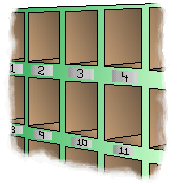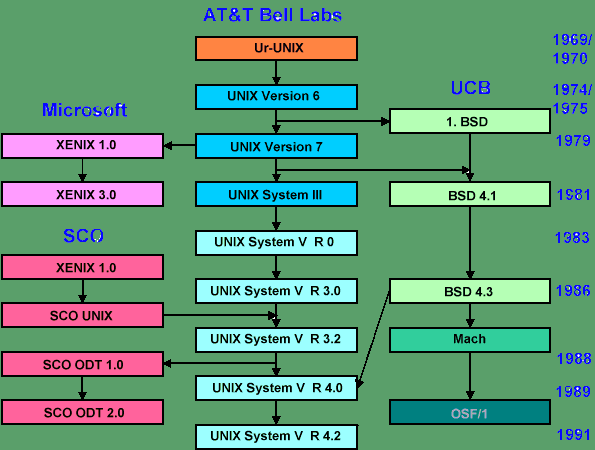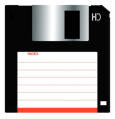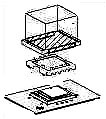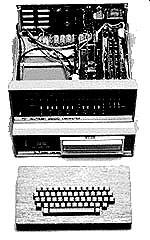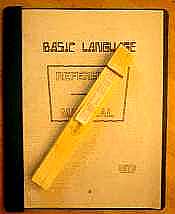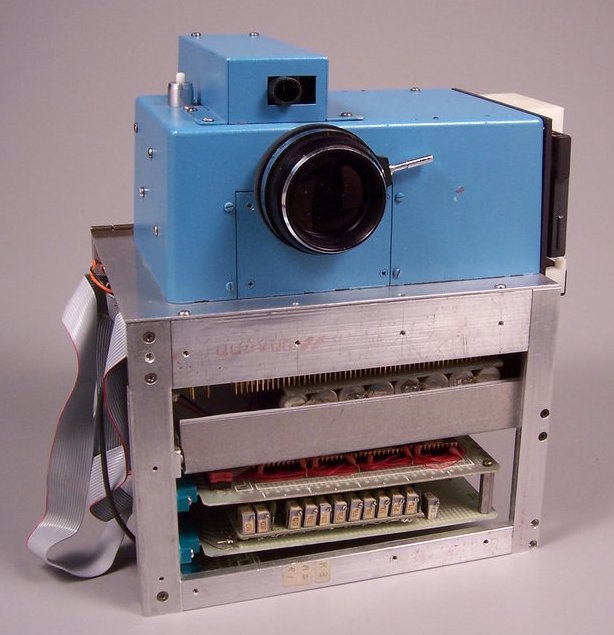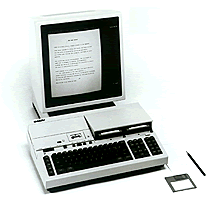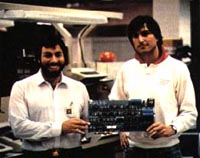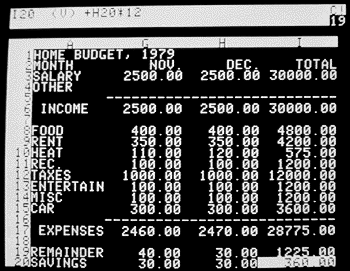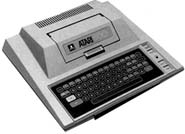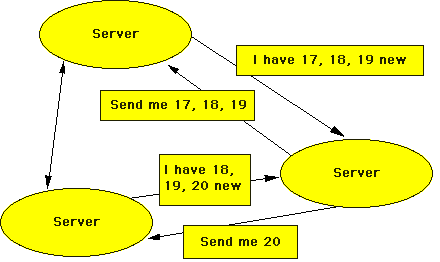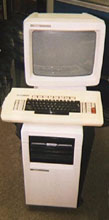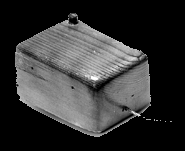 |
A Digital Timeline A History of Digital Technology 1960
to 1979 (added
May 3, 2002) |
|
An attempt at charting the trajectory of digital technology, with special attention to graphical applications. Comments solicited, corrections gladly considered, links and images most graciously desired. (Special note: those attributed as inventors or creators more often were joined by many others, some named, some not. And dates are often only approximations.)
Mouse
Doug Engelbart at Stanford
As a graduate student in electrical engineering at UC Berkeley after World War II Doug Engelbart began to imagine ways in which all sorts of information could be displayed on the screens of cathode ray tubes like the ones he had used as a radar technician during the war, and he dreamed of "flying" through a variety of information spaces.
—MouseSite
Hypertext editing system (HTML)
Andy van Dam & Tim Berners-Lee
The idea behind HTML was a modest one. When Tim Berners-Lee was putting together his first elementary browsing and authoring system for the Web, he created a quick little hypertext language that would serve his purposes. He imagined dozens, or even hundreds, of hypertext formats in the future, and smart clients that could easily negotiate and translate documents from servers across the Net. It would be a system similar to Claris XTND on the Macintosh, but would work on any platform and browser.
—Jeffrey Veen
Random Access Memory (RAM)
Robert Dennard
At that time, RAM was a known and used concept: memory reserved for writing to and reading from in a temporary fashion, to be erased every time the computer is turned off. However, in the mid-1960s RAM required an elaborate system of wires and magnets that negated in practice RAM's theoretical efficiency. Dennard's revolutionary achievement was to reduce RAM to a memory cell on a single transistor. His key insight was that it should be possible to store binary data as a positive or negative charge on a capacitator. After several months of experimenting, Dennard had reduced his RAM cell to a single field-effect transistor and a data line that both wrote and read the charge in a small capacitator. The ultimate effect of Dennard's invention was that a single chip could hold 16 million RAM cells
—The Lemelson-MIT Program's Invention Dimension
Mini-computer
Ken Olsen at Digital Equipment Corporation
The DEC PDP-8 computer on March 22, 1965, is generally recognized as the most important small computer of the 1960's. It was the least expensive parallel general purpose computer on the market, the first computer sold on a retail basis, and the first parallel general purpose digital computer sold in a table-top configuration.
—Douglas W. Jones
Internet
Department of Defense
The global Internet's progenitor was the Advanced Research Projects Agency Network (ARPANET) of the U.S. Department of Defense. This is an important fact to remember...
—Michael Hauben
Unix
The Creation of the UNIX* Operating System
After three decades of use, the UNIX* computer operating system from Bell Labs is still regarded as one of the most powerful, versatile, and flexible operating systems (OS) in the computer world. Its popularity is due to many factors, including its ability to run a wide variety of machines, from micros to supercomputers, and its portability -- all of which led to its adoption by many manufacturers.
Like another legendary creature whose name also ends in 'x,' UNIX rose from the ashes of a multi-organizational effort in the early 1960s to develop a dependable timesharing operating system.
—www.bell-labs.com/history/unix/
Floppy disk
Floppy disk drives were originally introduced commercially as a read-only device to hold microcode and diagnostics for large IBM mainframe computer systems in the early 1970s.
—Accurite Technologies Inc
Microprocessor
Gilbert P. Hyatt & Ted Hoff at Intel
In 1969, a Japanese firm called Busicom contacted Intel about developing custom chips for its new desktop-printing calculator. Hoff thought there was a better, simpler way to develop the technology than what the Japanese were initially looking for. Rather than build 12 customized calculator chips, each with a single specific function, Hoff proposed that Intel develop a more universal CPU chip[computer processing unit] that could also run the calculator. The idea of a CPU on a chip had been around since the early 1960s but had not been feasible then. But Fairchild and Rockwell had both done some preliminary work in the area and Hoff thought he could make it work.
—Linda Stranahan
Graphical user interface
Xerox
The history of graphical user interfaces (GUIs) goes back to the 1970s. Project Smalltalk was established at Xerox Palo Alto Research Center (Parc) which attempted to look into the future. The idea was to assume that in the future computing power would be abundant and inexpensive. How could the best use be made of the power available? Two influential developments resulted: object-oriented programming and the graphical user interface.
—Alistair D. N. Edwards
Altair personal computer
Ed Roberts at Micro Instrumentation Telemetry Systems (MITS)
Altairs were originally "Hobbyist" computers and have their roots in kits. They helped define the "personal" in Personal Computers. These machines where part of an open architecture concept that later made the PC successful. The S-100 bus allowed Altairs to be expanded and created opportunities for other companies to form.
—William Thomas Sanderson
Programming language— Beginner's All-purpose Symbolic Instruction Code (BASIC)
A commercial version by Bill Gates & Paul Allen
Paul Allen: "So, I called up Ed and [said: we have] this basic [interpreter] and... it's not that far from being done, and we would like to come out and show it to you."
Bill Gates: "So we created this basic interpreter. Paul took the paper tape and flew out. In fact, the night before he got some sleep while I double-checked everything to make sure that we had it all right."
First Digital Cameria
Steven Sasson, Kodak, et al
In the winter of 1975, Steven Sasson, a young engineer working in the Applied Research Lab at Kodak, tested out a new device for the first time. Now known as the first true digital camera, it was cobbled together using leftover parts he found in the lab. Thirty five years later, President Obama awarded Sasson the National Medal of Technology and Innovation for his invention.
—Christian Storm
Word processor (Electric Pencil)
Michael Schrayer
At that time, in the CPM world, the Electric Pencil was the word processor of the day. I took the care to contact Dave Schrayer, author of Electric Pencil and asked if I could use the same "dot" commands for printer formatting. This way, electric Pencil users would already know the commands if they decided to go to EasyWriter. Or go with Electric Pencil if they had to work in CPM.
—Webcrunchers International
Apple computers
Steven Jobs & Steven Wozniak
Wozniak had been dabbling in computer-design for some time when, in 1976,
he designed what would become the Apple I. Jobs, who had an eye for the
future, insisted that he and Wozniak try to sell the machine, and on April
1, 1976, Apple Computer was born.
—Glen Sanford
Network intercommunication—
Transfer Control Protocol/Internet Protocol (TCP/IP)
As time passed many enhancements were made to the existing protocol but by 1973 it was clear that [the first network] was unable to handle the volume of traffic passing through it... The TCP/IP and gateway architecture was proposed in 1974. This protocol was to be independent of the underlying network and computer hardware as well as having universal connectivity throughout the network. This would enable any kind of platform to participate in the network.In 1981 a series of requests for comment was issued, standardising the TCP/IP version 4 for the Arpanet.
—PeteDotCom
Spreadsheet program (VISICALC)
Dan Bricklin & Bob Frankston
The idea for the electronic spreadsheet came to me while I was a student at the Harvard Business School, working on my MBA degree, in the spring of 1978. Sitting in Aldrich Hall, room 108, I would daydream. "Imagine if my calculator had a ball in its back, like a mouse..." (I had seen a mouse previously, I think in a demonstration at a conference by Doug Engelbart, and maybe the Alto). And "..imagine if I had a heads-up display, like in a fighter plane, where I could see the virtual image hanging in the air in front of me. I could just move my mouse/keyboard calculator around, punch in a few numbers, circle them to get a sum, do some calculations, and answer '10% will be fine!'" (10% was always the answer in those days when we couldn't do very complicated calculations...)
—Dan Bricklin
Laser printer
Xerox
The original laser printer was developed at the Xerox Palo Alto Research Center. Xerox Engineer, Gary Starkweather adapted Xerox copier technology adding a laser beam to it to come up with the laser printer.
—Mary Bellis
Atari microcomputer
Steve Mayer and Ron. Milner
Atari
is most known for its innovations in video game technology. But a wealth
of computer products and technologies were pioneered by Atari. In 1979
Atari Inc. showcased its first computer product at the Winter Consumer
Electronics show.
From that point on Atari created innovative 8 bit computers which were
manufactured and supported up until 1992!
Unix User Network
(Usenet)Tom Truscott, Jim Ellis, & Steve Bellovin
Usenet came into being in late 1979, shortly after the release of V7
UNIX with UUCP. Two Duke University grad students in North Carolina,
Tom Truscott and Jim Ellis, thought of hooking computers together to
exchange information with the UNIX community. Steve Bellovin, a grad
student at the University of North Carolina, put together the first
version of the news software using shell scripts and installed it on
the first two sites: "unc" and "duke."
—Mark Moraes
Mouse with computer—Xerox Star
Star was designed as an office automation system. The idea was that professionals in a business or organization would have workstations on their desks and would use them to produce, retrieve, distribute, and organize documentation, presentations, memos, and reports. All of the workstations in an organization would be connected via Ethernet and would share access to file servers, printers, etc.
—Jeff Johnson and Teresa L. Roberts et al
| General references |
Computer Technology Timeline by The Bookmark Chronology of Personal Computers A Chronology of Computer History Computing History, Myths and Legends (Ian Darwin) A Brief History of Computer Technology History of Communication From Cave Drawings
|
|
|
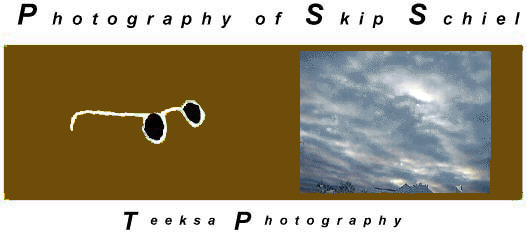 |

